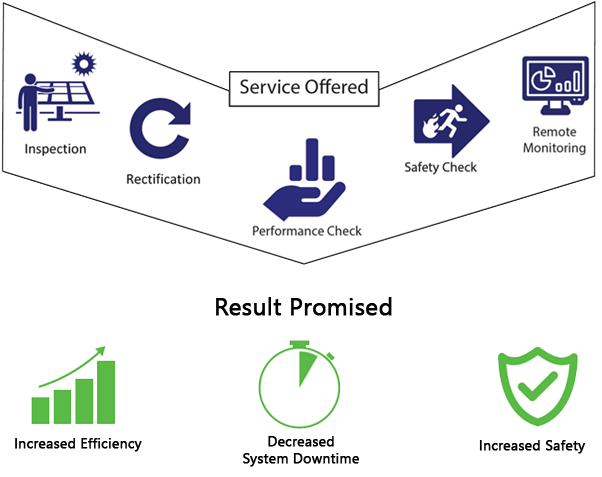


For the optimal operation of a PV plant, maintenance must be carried out on a regular basis. All the components should be kept clean. It should be ensured that all the components are fastened well at their due place.
Panacean Enterprise undertakes Operation and maintenance of several solar plants for its clients. With increasing emphasis on solar power by the Govt. of India our experience in O&M of solar plants is very valuable.

Our O&M Team Visit Solar plant at regular time interval and note down points in I&M Sheets as Per the points corrective action to be taken as soon as possible.
A visual inspection of the modules is done periodically to look for possible defects such as cracks, chips, de-lamination, fogged glazing, water leaks and discoloration. If any obvious defects are found, their location is noted down in the system logbook so that they can be monitored for generation output. If the damage causes the modules to perform lower than the rated value, they should be replaced.
Solar module mounting frames are examined to make certain that the frames and modules are firmly secured, and mounting bolts are rust free. Junction boxes are inspected to ensure that the wires are not chewed by rodents or insects.
After inspection our team rectify solution and comes up with different services which are mentioned below.

Solar Energy has great future but susceptible to fail if operation and maintenance is overlooked.